6 Key Benefits of Procurement Automation


For many procurement professionals, time is a luxury that is in short supply.
The culprit? More often than not, outdated procurement methods are full of tedious manual tasks.
Fortunately, there’s a solution called automation.
While it might appear complicated at first glance, automation comes with the promise of entirely remodeling the way the procurement process operates.
And it comes with a lot of benefits.
In this article, we’ll introduce you to these advantages. We bring you six indispensable reasons why adopting procurement automation might be a game changer for you.
Manual data entry is a tedious process, susceptible to so many mistakes.
And such mistakes are not as infrequent as you might think.
In fact, almost 90% of Excel spreadsheets contain errors.
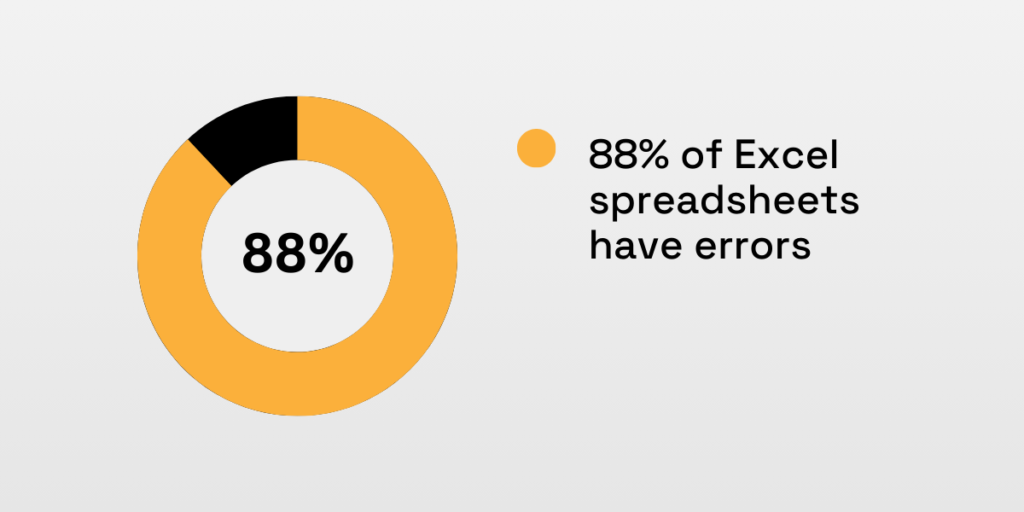
Illustration: Veridion / Data: Cassotis
That means that each keystroke you make carries the potential for error, and in procurement, those errors can have a hefty price.
To truly understand the snowballing results of human errors in data handling, let’s examine an example from the e-commerce giant Amazon.
In what was a memorable episode back in 2017, Amazon Web Services unexpectedly went down for a striking 4 hours. This wasn’t due to some sophisticated system glitch but a simple typing mistake—an employee entered the wrong command.
This slight misstep unintentionally shut down far more servers than intended, causing S&P 500 companies to lose $150 million and the U.S. financial service companies to go through a $160 million revenue drop.
The solution to such error-prone manual processes lies in automation.
Automation enables error-free data handling, and the studies show that AI tools in procurement automation can deliver accuracy levels as remarkable as 99%.
Take our tool, Veridion, as a case in point.
One of Veridion’s prime features is its ability to rapidly search for all sorts of suppliers based on a given set of parameters.
For instance, if you were to search for something so specific, such as manufacturers of automatic blood pressure monitors in the U.S. and Canada with over 100 million dollars in revenue, Veridion could execute this task in a few seconds through its supplier search API.

Source: Veridion
With just a few clicks, this tool lists 48 potential suppliers tailored to these exact parameters.
Each potential supplier comes with well-defined data points about various aspects of a supplier’s operations and products, allowing users to choose the best suppliers for their requirements.
Now, imagine how error-prone this process would be when done manually.
Going through all that data and trying to source all these suppliers without automation would not only take weeks, but would also be full of inaccuracies.
This is where the strength of automation tools such as Veridion lies.
They not only accelerate the procurement process but also significantly enhance data accuracy.
Visualize processing hundreds or even thousands of invoices, manually entering each piece of data.
Wouldn’t it be easier and more efficient if software could do that automatically?
The need for automating procurement becomes even clearer when looking at how the typical office workers spend their time. It’s not that efficient.
Roughly half of their working hours are consumed by repetitive tasks like creating and updating documents. Another 10% of their time is dedicated to manual data entry alone.
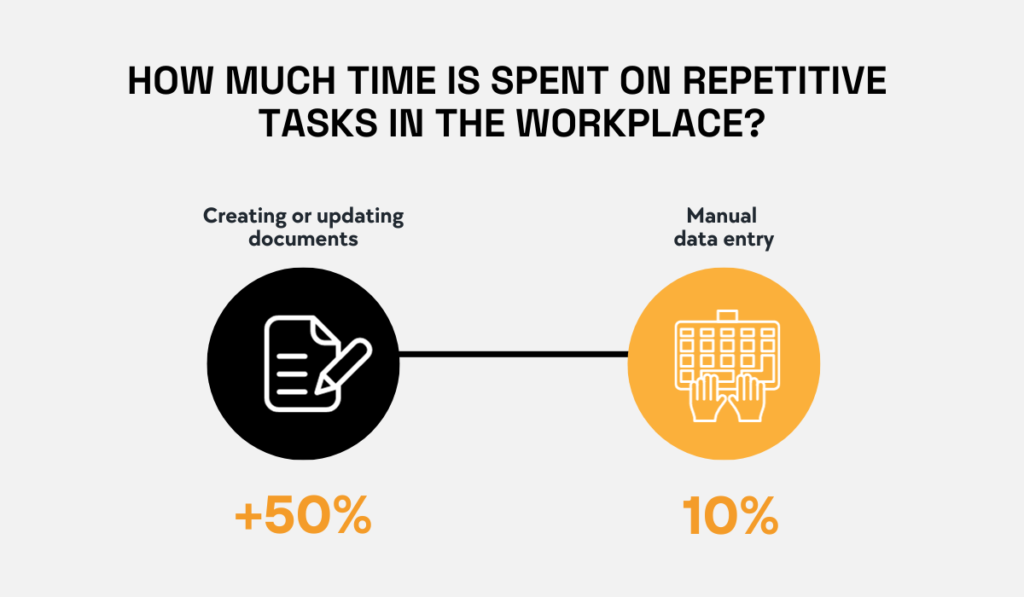
Illustration: Veridion / Data: Workfellow
Fortunately, a study by McKinsey reveals that as much as 45% of work activities could be automated, and that percentage, without a doubt, includes many procurement-related activities.
With the growth of operational demands and the spotlight on efficiency, we’ve reached a point where change in procurement is not just desirable—it’s downright necessary.
A study conducted in 2023 by Deloitte echoes this sentiment, reporting that 74% of Chief Procurement Officers choose operational efficiency as a primary objective.

Source: Deloitte
One of the main reasons why automation is brought to attention is because it digitizes all five key processes of procurement: from purchase requisitions and purchase order processing to invoices and payments, all the way to supplier and contract management.
By getting rid of physical files and manual data handling, a company can be significantly more efficient.
You get to reduce the time spent sifting through countless files to find a specific document or wait for approvals to come through.
And let’s not forget the peace of mind that comes with minimizing the risks associated with misfiled or lost documents.
In fact, a study on small to medium-sized businesses reported a notable increase in procurement efficiency after adopting automation.
The results were quite impressive—60% fewer misplaced invoices, a 59% drop in delayed payment approvals, and a 55% reduction in lost receipts.
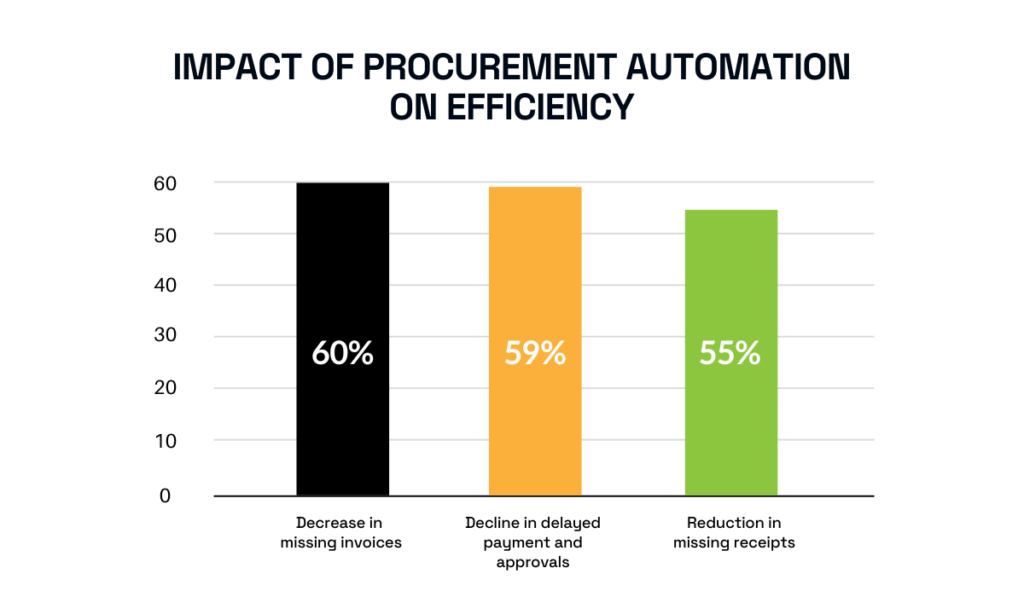
Illustration: Veridion / Data: Pymnts
But the efficiency doesn’t stop at document management. Automation also speeds up document creation, transaction processing, and a whole host of other routine clerical tasks.
Of course, there are case studies and data that support this claim.
For example, Ardent Partners discovered that businesses using e-invoicing systems—a key automation feature—processed invoices 31% faster than their non-automated counterparts.
In essence, efficiency means accomplishing more with less—less time, resources, and errors.
Procurement automation makes achieving this goal highly attainable.
Businesses making the shift to procurement automation also see significant cost savings.
That’s another fact profoundly supported by data.
According to a study by Capgemini, businesses that fully embrace digital procurement processes can see a whopping 40% cut in costs.
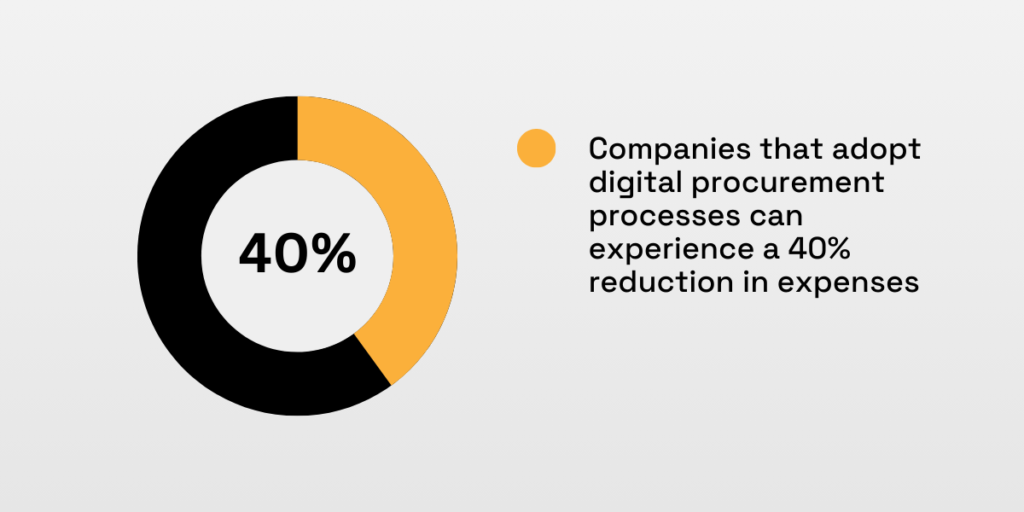
Illustration: Veridion / Data: Apty
How does that work? Let’s say, for instance, someone places an order for the wrong item.
It might seem like a small mistake at first, but it can spiral rapidly into a chain of unnecessary expenses.
There are refunds to process, additional shipping charges for the repeat order, and let’s not forget the potential rift with the suppliers.
As you can see, a single order error can be surprisingly costly—it can consume between 50% and 125% of the item’s original price tag to rectify.
But with automation, you can significantly reduce these errors and minimize the risk of unnecessary spending.
Traditional procurement is often burdened by another significant cost—manual invoice processing.
Companies can pay anywhere from $15 to $40 per invoice.
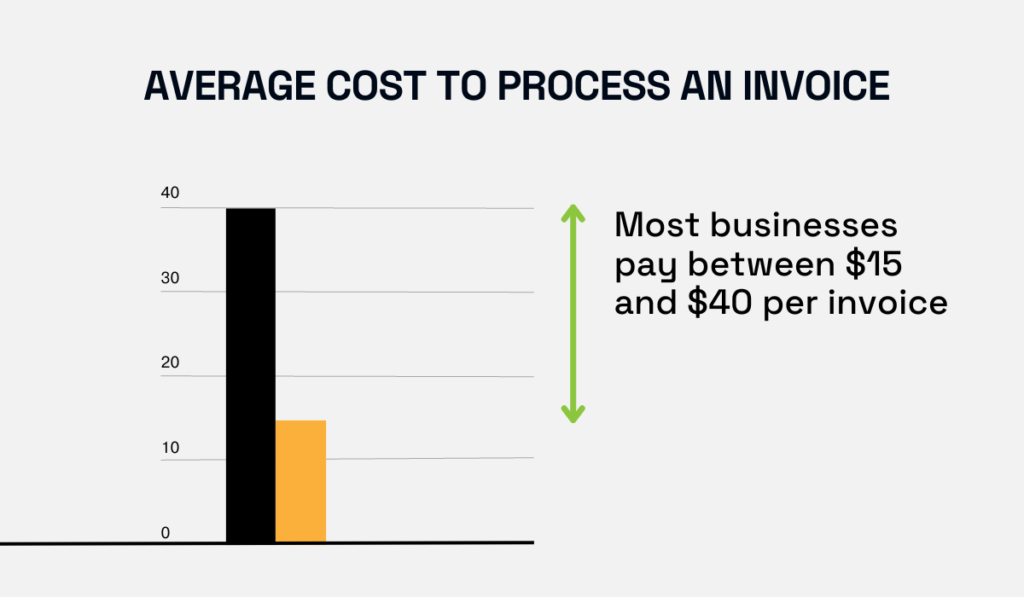
Illustration: Veridion / Data: Adobe
And those costs can quickly accumulate, considering the extensive number of invoices most businesses handle.
Introducing an automated procurement system dramatically lowers those costs, with the price per invoice dropping to around $3.50.
In addition to these cost reductions, procurement automation also introduces an unparalleled level of transparency to your procurement operations.
It pulls together all transactions, invoices, purchase orders, and other financial documents into one online user-friendly repository—a single source of information.
The result? You’ve suddenly got a lot more handle on your spending.
However, this transparency goes beyond the basic tracking of expenses.
Hidden within this consolidated data, you can find an array of valuable insights that you can use to make confident decisions or that could be paramount during negotiations.
For instance, when discussing terms with suppliers, you can use these insights as the trump card you need to secure better rates, payment terms, and quantity discounts.
As you can see, procurement automation doesn’t just get the job done–it gets it done smarter, faster, and more affordable.
Finding the ideal supplier and fostering a lasting and mutually beneficial relationship is not always easy, but it’s necessary in procurement.
The collaborative relationship with suppliers can heavily influence the company’s growth, operating costs, and overall profitability.
As Nitin Salvio Dsouza, head of supply chain at Publicis Sapient, said:
“Technology is a key enabler of a successful SRM when implemented correctly, but it does not operate alone in a bubble. Strategy and culture are also vital.”
Yet, despite this substantial value, successful collaborations are sporadic, and many companies don’t have ideal supplier relationships.
Automation can help with that.
For starters, it has the ability to provide you with great clarity on supplier data.
Picture the traditional procurement process. Likely, it uses a blend of spreadsheets, standalone emails, and possibly even some scattered sticky notes to keep track of supplier data.
Now, this approach is a ticket to outdated information, inaccuracies, and omissions.
Procurement automation tools consolidate supplier data into a single, centralized system.
This ensures you have a comprehensive, accurate, and up-to-date repository of supplier information at your disposal.
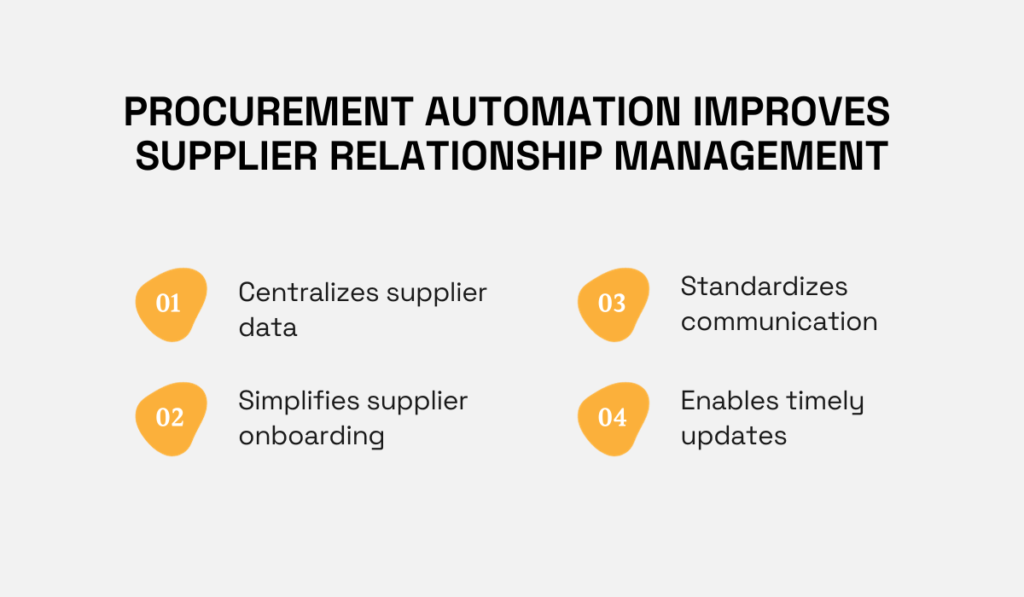
Source: Veridion
Another major advantage is the automation of supplier onboarding procedures.
Traditionally, without automation, onboarding a new supplier can drag out for weeks rather than days.
A common issue with manual onboarding is information gathering, which may include endless streams of emails and phone calls just to collect basic supplier data.
This lag not only slipstreams into a slower time to market but could also mean missed business opportunities.
With procurement automation tools, you can simply send a single digital form to the supplier to fill out. Once completed, their data is automatically captured in the system.
Procurement automation tools also standardize communication with suppliers.
With templates, predefined forms, and automated notifications, you ensure all parties share crucial information in a clear and consistent manner.
To sum up, it’s undeniable that the human element remains at the heart of nurturing supplier partnerships.
However, procurement automation shines in its ability to offer invaluable assistance where tasks are monotonous and need centralization and standardization.
Nothing can slow down an operation more than a procurement process stuck in the hurdles of manual systems.
If it consists of a lot of paperwork and bureaucracy, then it’s extremely time-consuming.
That means you’re not able to respond to changes in supply and demand quickly, adjust to market fluctuations, and be able to pivot fast when a supplier doesn’t come through.
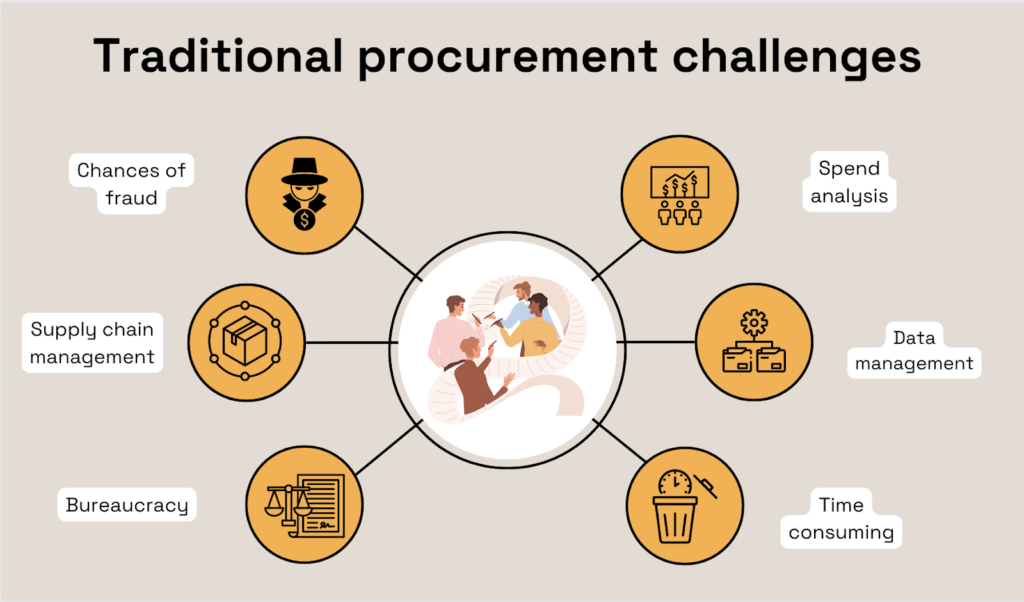
Source: Veridion
And if COVID-19 has taught us anything about sourcing materials and goods, it’s that traditional processes are in desperate need of agility.
And that’s where procurement automation steps in to save the day.
With procurement automation, you can streamline the tasks that have traditionally bogged down your operations, such as manual data entry, managing spreadsheets, and chasing down approvals.
But how does this translate into better agility? Take contract management as a prime example.
Manually creating a contract with a supplier involves extensive negotiations, amendments, and a lengthy approval process.
According to Forrester and Aberdeen, on average, it takes 3.4 weeks to get a contract approved.
However, automation can reduce this to a process as simple as populating a standard contract template and pushing it for approval.
This agility means you can respond faster to new deals, offers, or changes in the market.
Moreover, imagine a situation where a supplier can’t deliver as agreed.
In the pre-automation days, you might have frantically searched through supplier lists and records, feeling the pressure mount.
But, thanks to automation tools, you can identify an alternative supplier instantly.
Take Veridion as an example of a tool that can help with that. It’s all done through a single API.
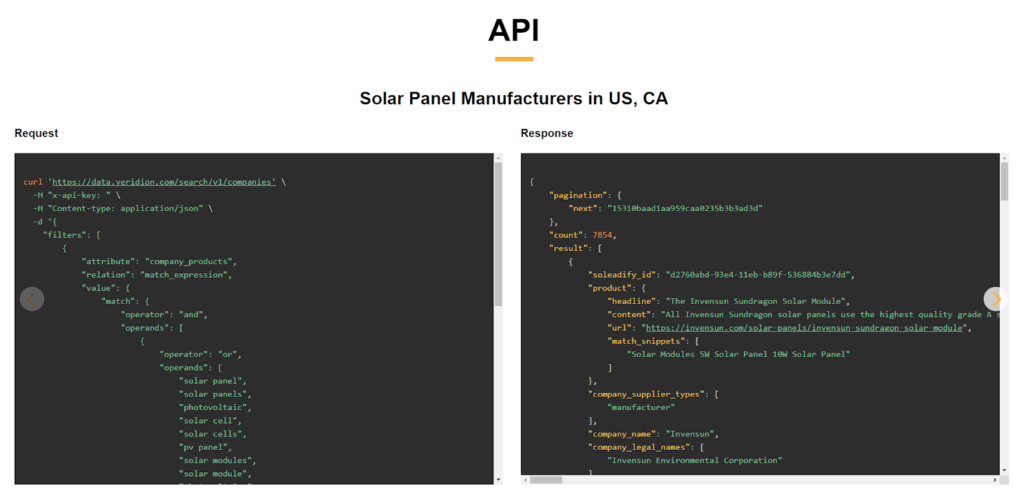
Source: Veridion
Our tool contains data on over 80 million businesses from 230 countries, going into great detail.
And that data is always up to date, meaning it can find the perfect supplier in a matter of seconds with great confidence.
These real-life examples just scratch the surface of how automation enhances agility in procurement.
You can apply this strategy to almost any part of the procurement process, making you better equipped to handle market fluctuations like the ones we’ve seen with COVID-19.
So, if you want a more resilient and adaptable business, automate your procurement processes.
Dealing with industry regulations and compliance requirements can be daunting, especially in procurement, where regulatory compliance is non-negotiable.
But automation helps in that regard as well.
For starters, procurement automation systems promote compliance by giving you a clear view of your entire procurement process. This visibility helps you better manage your spending and mitigate errors and fraud.
Automation enables compliance in many different ways.
For example, it streamlines contract management by allowing you to create, store, and monitor your contracts in a centralized, secure database.
Automatic alerts and reminders keep you on top of expiring contracts, while version control ensures that you’re always using the most up-to-date document.
Also, while more and more companies want to work jointly with suppliers on sustainability and compliance, finding suppliers who adhere to industry regulations isn’t always a walk in the park.
However, procurement automation tools have supplier databases that can vet candidates based on compliance standards.
Imagine searching for FDA-approved suppliers in India and getting a list of viable candidates in just a few clicks.

Source: Veridion
Automating procurement processes is no longer just an idea but an achievable reality today.
As you can see, even something so complex as compliance with industry regulations can become more streamlined with the proper automation tools.
With everything regulated within the system, you won’t have to worry about forgetting to renew a contract or update documents based on new regulations.
Developing a centralized, automated system that is easily accessible to procurement teams will lower the burden of meeting compliance standards of individual team members.
With the six key benefits outlined in the article, you are well-equipped to recognize the productivity gains and cost efficiencies that automation brings to the table.
However, an essential fact to remember is that incorporating automation into your procurement process should not be viewed as a sweeping replacement of existing procedures.
Instead, consider this transition as an opportunity to ramp up your established operations and gain the agility needed to stay ahead of the curve.